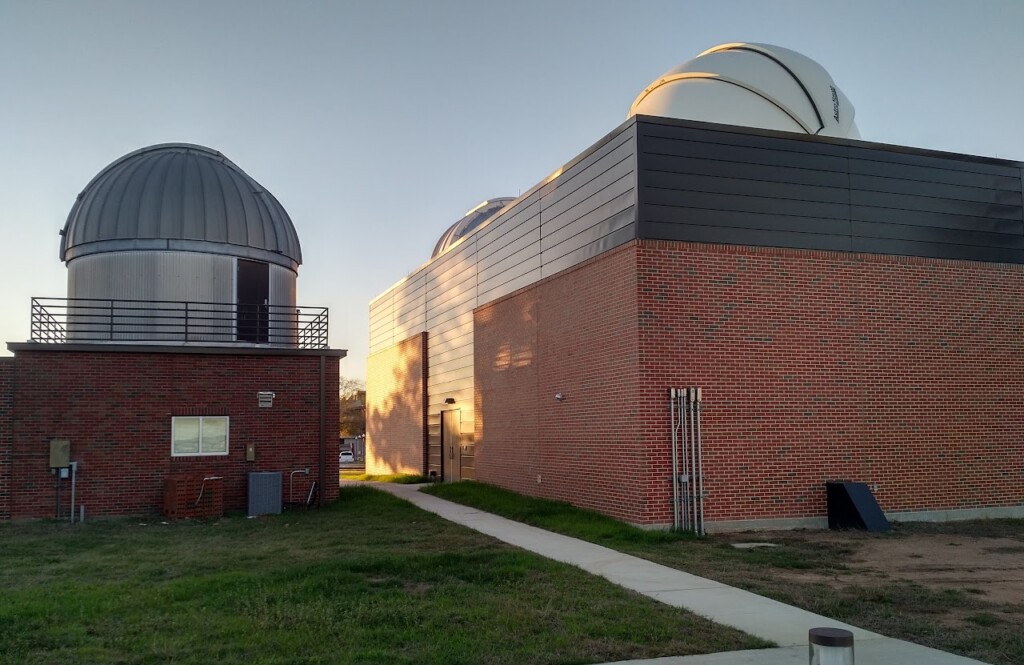PRAIRIE VIEW, Texas (Oct. 13, 2023) – On Oct. 14, 2023, a spectacular solar eclipse, often referred to as the “ring of fire,” will grace the skies. Prairie View A&M University will be the only HBCU with an on-campus observatory capable of viewing the eclipse.
“This is an exciting time to showcase our state-of-the-art solar observatory,” said Dorie Gilbert, Ph.D., dean of the Marvin D. and June Samuel Brailsford College of Arts & Sciences.
This celestial event will be visible along a narrow path sweeping across North and South America. During the eclipse’s midpoint, observers along this path will witness the Sun forming a brilliant ring around the Moon, while those outside this region will experience a partial solar eclipse. Astronomers have dubbed this occurrence an “annular eclipse” due to its resemblance to a ring, derived from the Latin word annulus.
The Prairie View Observatory Complex has a rich history, with the restoration of the Solar Observatory building in 2017 and the construction of a new Observatory building in 2020 with two identical piers. The only other observatory that has two identical piers is located at the space imaging satellite facilities operated by the U.S. Department of Defense. These efforts were made possible through funding from NASA, CRI, DoE, Title-III, and Texas Permanent University Funds.
“Prairie View Observatory Complex is a one-of-a-kind and world-class facility with the ability to study solar activity, lunar meteor impacts, and low light deep-space objects, such as distant stars and galaxies, in collaboration with major astronomy programs in the country,” said Premkumar Saganti, Ph.D., principal investigator and director of Prairie View Solar Observatory.
The Complex currently boasts three domes, each housing a unique telescope. The East Dome actively collects daily solar observations, providing valuable data for solar physics research. Plans are also in motion to expand the facility’s capabilities with the addition of 1.5-meter telescopes—some of the largest in Texas—through external funding from a former Google founder, as well as a White House initiative.
Solar eclipses occur when the Moon casts shadows on Earth, with three distinct types of shadow: the umbra, penumbra, and antumbra. To witness annularity, one must be in an area where the Moon casts the antumbra shadow.
At the maximum point, the annular path typically measures around 150 km, offering a perfect “ring of fire” in the center. In other areas within the annular path, the ring may vary in width or be absent altogether.
For those in the San Antonio area, the annular eclipse begins at 10:23 a.m., with the maximum occurring at 11:54 a.m., featuring a 4-minute and 21-second annularity, and concluding at 1:33 p.m., with a total duration of 3 hours and 9 minutes. North of Houston, including Prairie View, a partial eclipse begins at 10:27 a.m., reaches its maximum at 11:58 a.m., and ends at 1:38 p.m. The eclipse will last a total of 3 hours and 11 minutes.
Prairie View Observatory Complex welcomes students and guests to observe the eclipse between 11 a.m. and 1 p.m. on Oct. 14. The observatory is located next to the Carden-Waller Cooperative Extension Building on E.N. Norris Street.
By Kerry Laird
-PVAMU-


